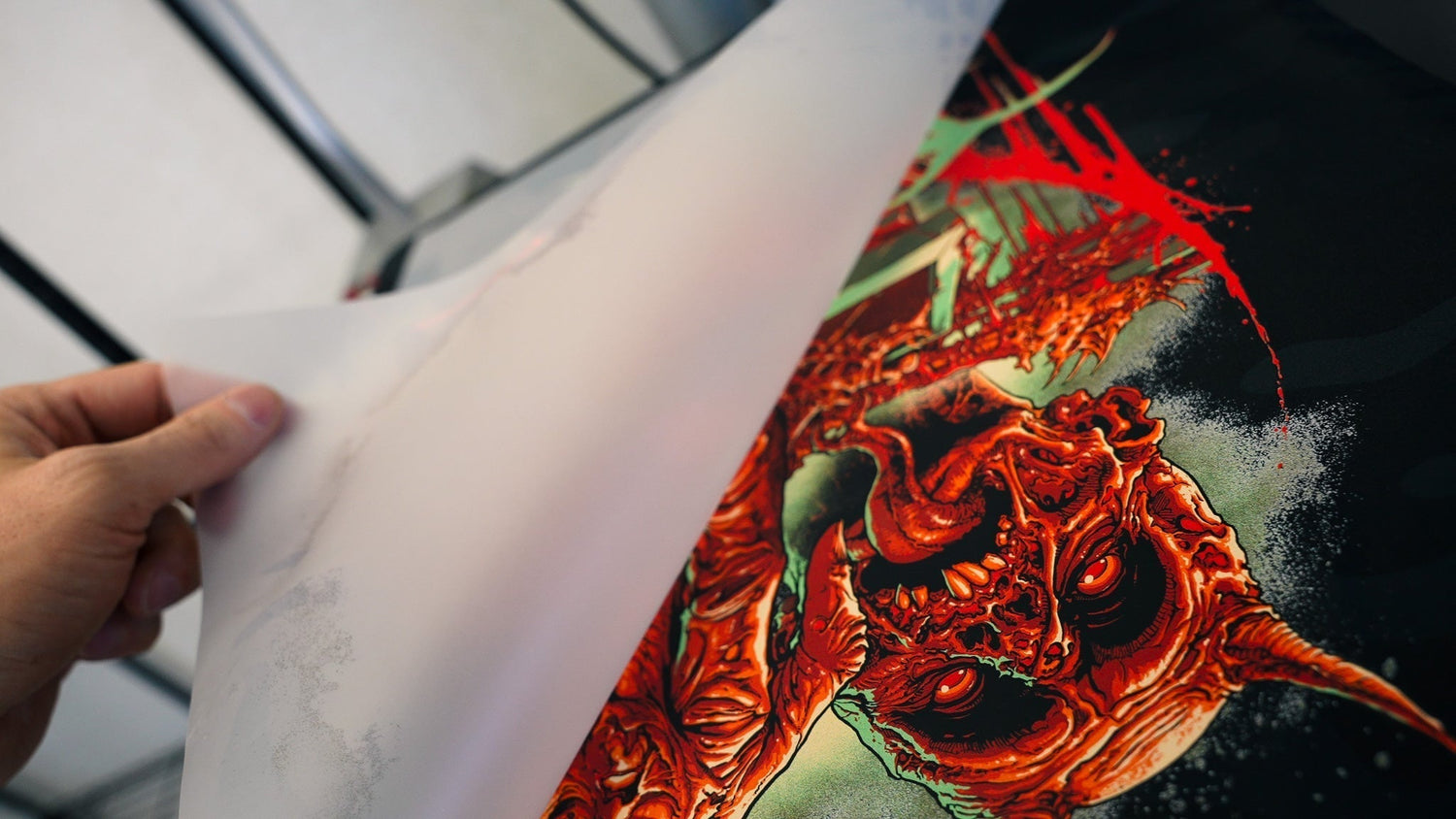
💥 DTF Troubleshooting: 3 Quick Fixes for Clean, Professional Transfers
If you're deep in the DTF game, you know the magic of a perfect press. But when things go sideways—transfers not sticking, weird edge lift, or film refusing to peel clean—it can be frustrating as hell. Don’t sweat it. At Rogue Transfers, we’ve seen it all, and we’re breaking down the most common DTF problems (and how to fix them fast) so your press game stays tight.
❌ “My transfer isn’t sticking — what’s going on?”
This is hands down the most common issue we hear. If your transfer isn’t bonding to the fabric, it’s a settings problem—and it usually comes down to one of three things: temperature, pressure, or time.
Here’s what to check:
-
Temperature: Your press might say it’s hot enough, but platen temps can lie. Use a laser thermometer or heat strip to test the actual surface temp of your press. For most DTF transfers, you're aiming for around 2750°F - 310°F depending on the fabric of the garment.
-
Pressure: DTF adhesive needs firm pressure to melt and bond into the fabric. Too light and it just floats on top. You want to feel that solid clunk when the press locks down. Don’t be afraid to crank it up.
-
Time: Our standard is around 10–15 seconds, but depending on your garment and heat press, that can vary.
💡 Pro Tip: If you’re getting inconsistent results, do a test press on scrap fabric before running full production. Don’t guess — dial it in.
❌ “The edges are lifting after pressing.”
Everything looked good, but a few minutes later, the edges are curling or peeling up. Super annoying—and super fixable.
What’s happening: Sometimes, the edges of the transfer don’t get the same heat or pressure as the center. That means the adhesive hasn’t fully activated around the edges.
Here’s how to fix it:
-
After your initial press and peel, throw it back on the press with a kraft paper or parchment sheet over top.
-
Give it a second press for 5 seconds with firm pressure.
-
This post-press helps melt the adhesive just enough to lock in those edges and create a smooth, sealed finish.
💡 Pro Tip: Always check the corners and edges before packing or shipping. That second press can save you from a callback or refund.
❌ “The film doesn’t peel cleanly.”
You press, wait, and go to peel—and parts of the design lift up with the film. Brutal.
This usually comes down to peel timing or pressure. Our DTF transfers are hot peel but film formula consistency can vary from batch to batch. Here’s what to try:
-
If you're hot peeling and the design lifts, let it cool down slightly before peeling. Some films do better with a warm or cold peel even if they’re labeled as hot peel.
-
If your pressure was too light, the adhesive may not have fully engaged. On the next press, add more pressure and make sure it’s even across the whole platen.
-
When peeling, use one smooth, low-angle pull. Don’t yank straight up—that's how you get distortion or partial lifts.
💡 Pro Tip: Every film brand behaves a little differently. When in doubt, run small tests and take notes on what works best for your setup.
Final Thoughts
DTF is all about control—heat, pressure, time, and peel. Get those four dialed in, and your prints will look pro every single time.
Still stuck? Shoot us a message at Rogue Transfers. We’re always down to help you troubleshoot, nerd out on settings, or just chat about gear. Because let’s be honest—this isn’t just printing. It’s a craft. And we’re all about getting it right.
— The Rogue Transfers Team
